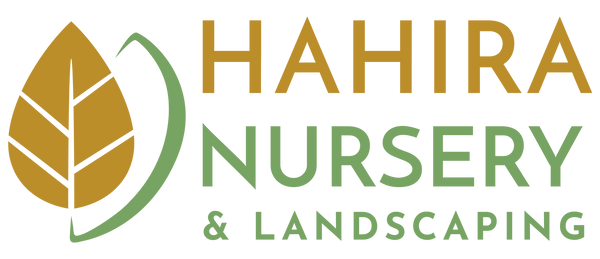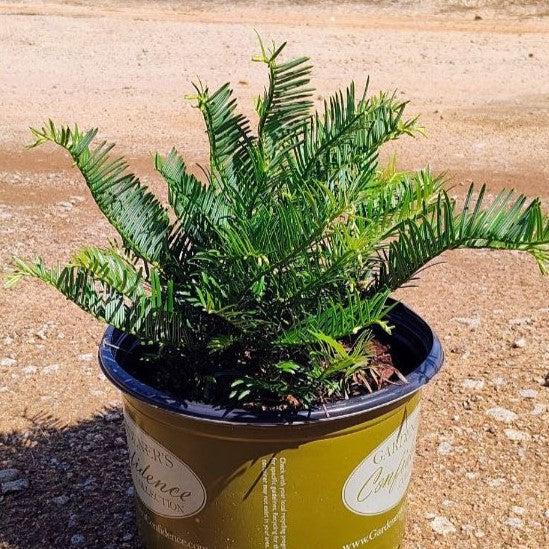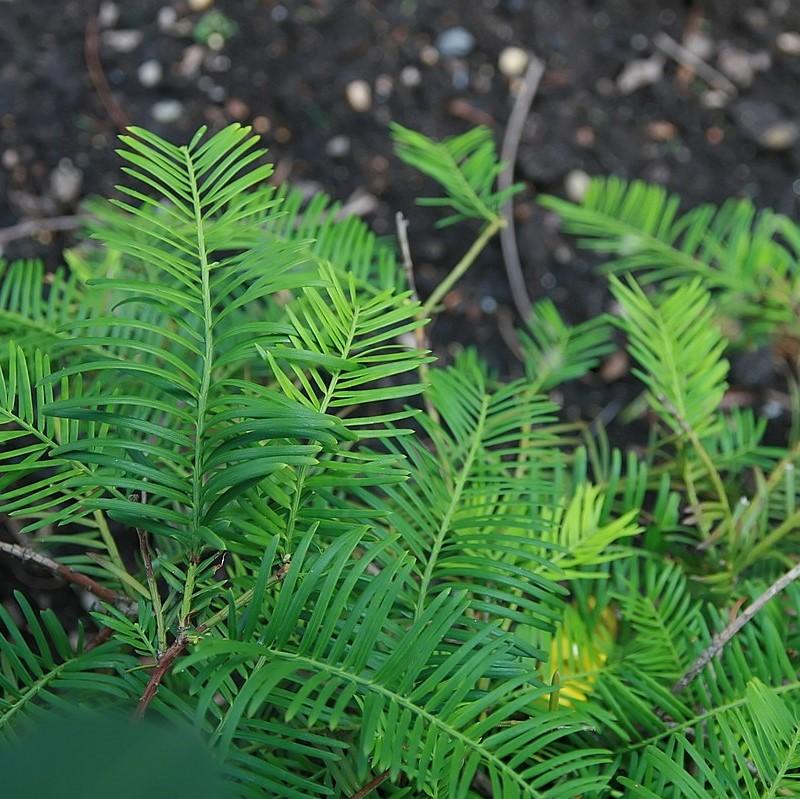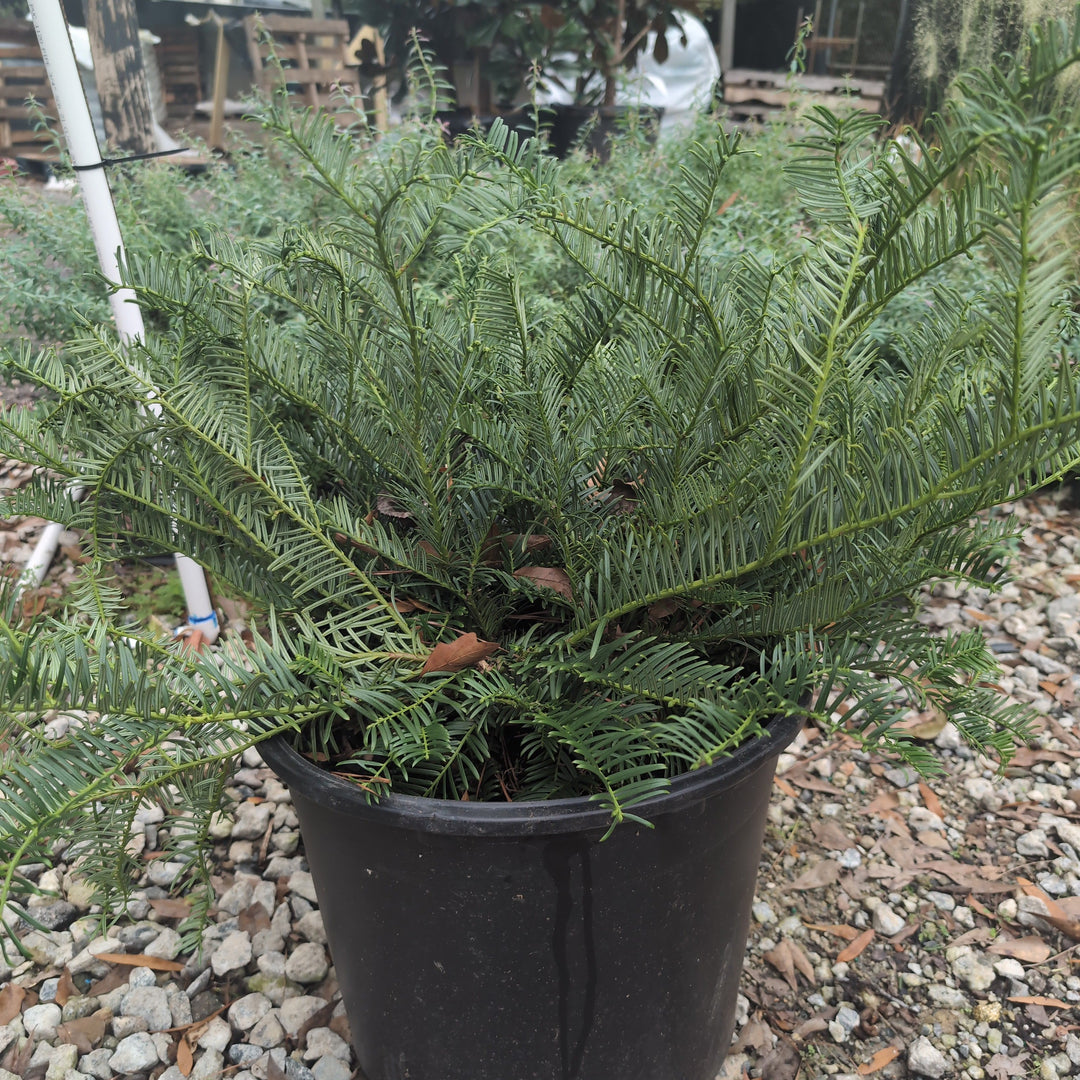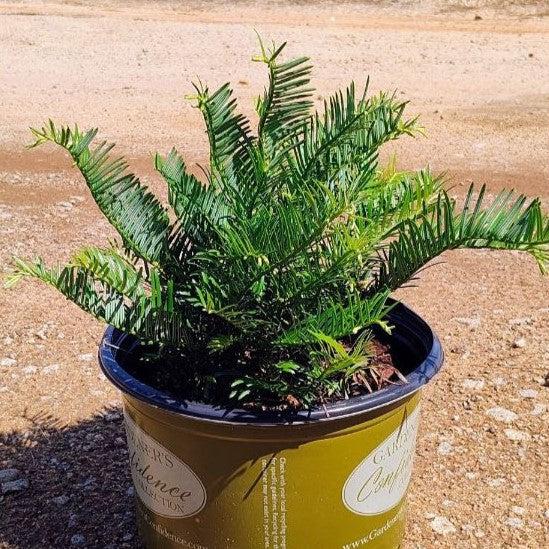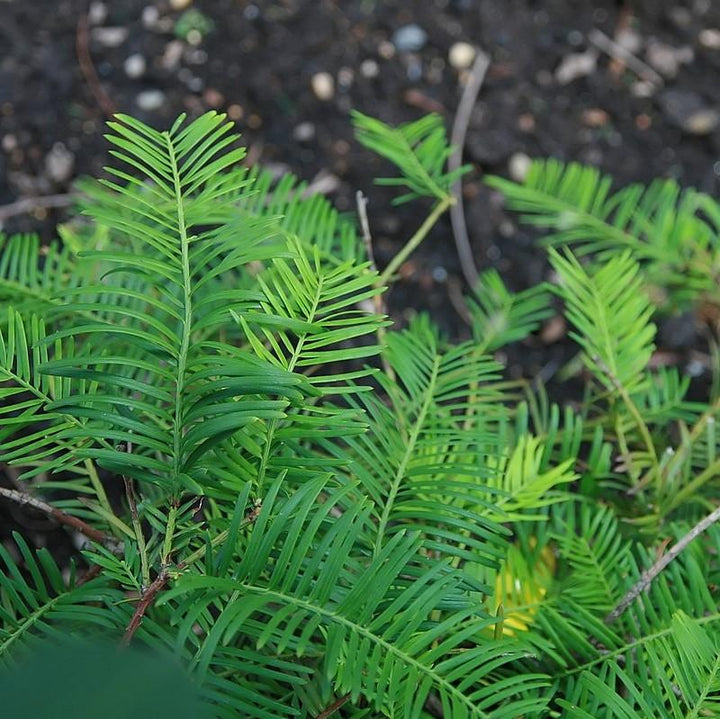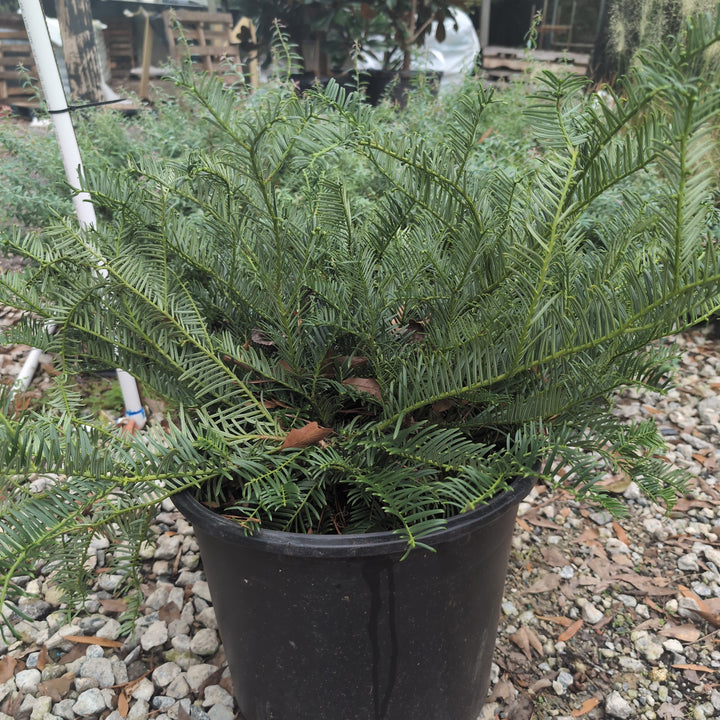Creeping Japanese Plum Yew, Spreading Plum Yew
Cephalotaxus harringtonia 'Prostrata'
- In stock, ready to ship
- Backordered, shipping soon
- Locally Grown
Creeping Japanese Plum Yew is a slow-growing evergreen conifer shrub with a spreading habit. It’s long needle-like foliage emerges lime green in spring and matures to a dark green it holds through winter. If the edible fruits are desired, both a female plant and male pollinator are required. Prefers partial sun and rich well-drained soils. Drought tolerant once established.
|
Type: |
|
|
Height: |
2' - 3' |
|
Spread: |
3' - 4' |
|
Spacing: |
3’ |
|
USDA Hardiness Zone: |
6 - 9 |
|
Culture: |
|
|
Bloom Color: |
N/A |
|
Season of Interest: |
MAINTENANCE NEEDS: Low maintenance. Water regularly, but allow the soil to dry slightly between watering. It can be damaged in full sun and cannot tolerate acidic soils.
LANDSCAPE USES: Accents or Group Plantings, Borders, Woodland Gardens, Wildlife Gardens, Hedges, and Containers.
COMPANION PLANTS: Fern, Magnolia, Japanese Forest Grass
IMAGES: Michael Rivera, Coastal Georgia Botanical Gardens, Spreading Plum-yew Cephalotaxus harringtonia 'Prostrata', CC BY-SA 4.0, (2) Ruff tuff cream puff, Cephalotaxus harringtonia prostrata, CC0 1.0, (3) Photos by NC Extension Gardener, (1) Form, Jim Robbins, CC BY-NC-ND 4.0, (2) Leaves, Jim Robbins, CC BY-NC-ND 4.0, (4) Photo by David J. Stang, Cephalotaxus harringtonia Prostrata 2zz, CC BY-SA 4.0
*As plants have ranges in appearance they may not appear as the images shown
Hahira Nursery takes pride in growing high-quality, fresh, healthy plants and ensuring they are delivered safely, on time, and with little to no damage so they are ready to be planted.
Despite all of our best efforts, once the plants have left our nursery, there are many variables outside of our control that can cause plants, flowers, trees, shrubs, or grasses to not thrive as they should. Plants are living organisms and are susceptible to a number of different environmental and care factors that are outside of our control.
Our goal is to build strong relationships with our customers and we always want to make things right, but we cannot always guarantee what happens once the plants are outside of our nursery, how you care for the plants, if they’re in the correct growing zones, weather damage, soil conditions, insect infestations, etc..
If you have any questions or concerns about a purchase you’ve made, please email us at info@hahiranursery.com and we will work with you on a case-by-case basis to the best of our ability.
Please note that all living organisms are not identical and their coloring, size, and shapes may differ from what you see online in our store. Each plant has its own characteristics that are impacted by the time of year, growth cycle, weather, and other elements which will cause them to look different than their photos.
